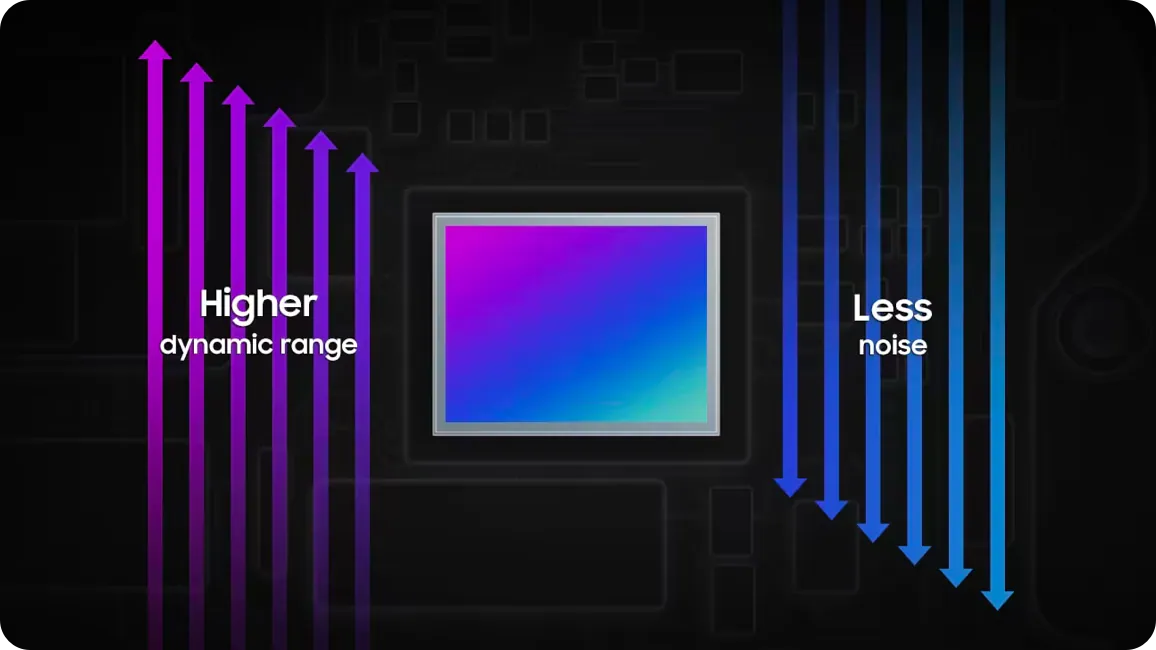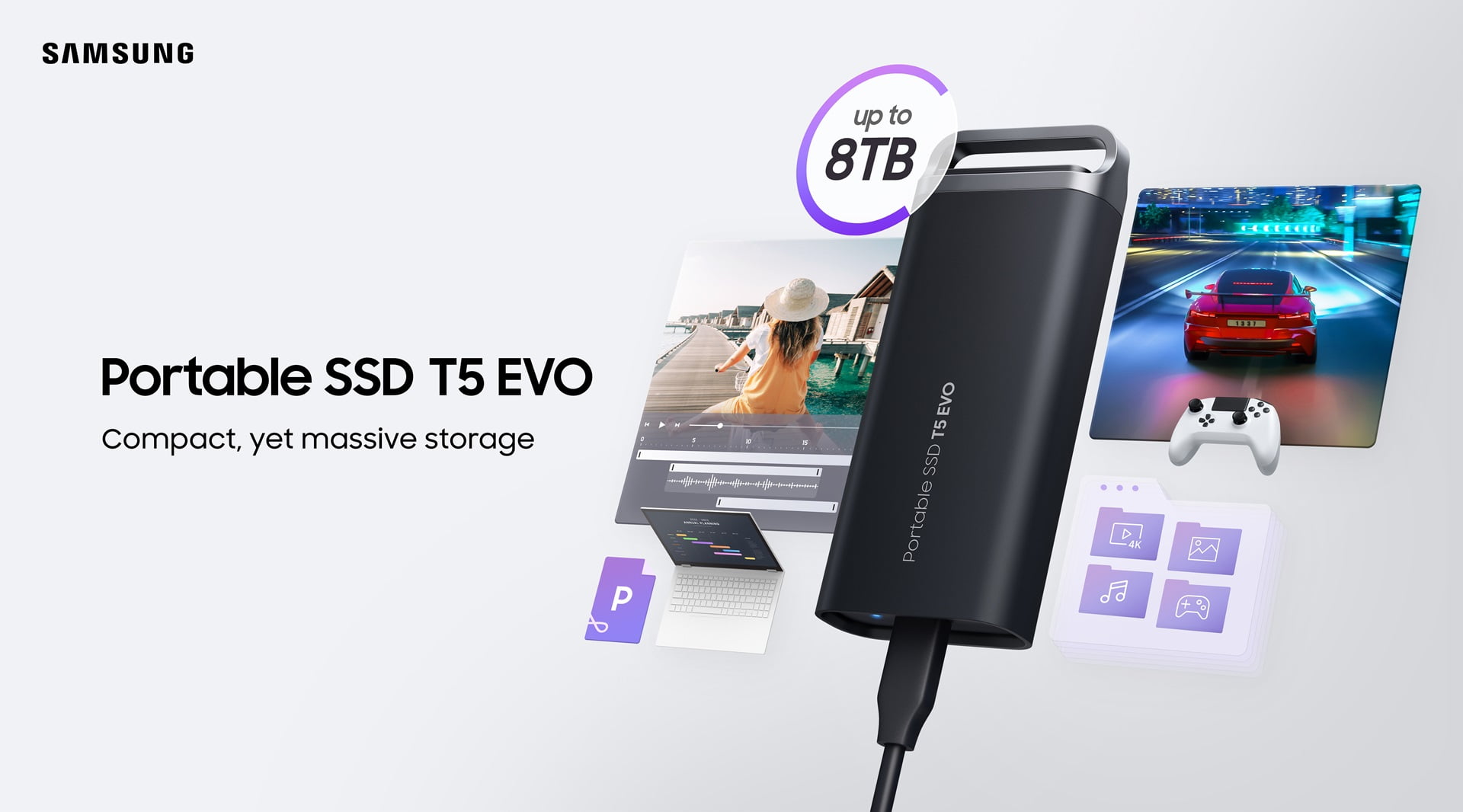Despite not many new smartphone releases that pique interest, there is still new SoC and hardware to look at in this third edition of our monthly tech wrap-up.
- SAMSUNG ISOCELL GNK ANNOUNCED WITH BETTER AUTOFOCUS AND 8K VIDEO CAPABILITY
- ASUS CHROMEBOOK CM30 DETACHABLE ANNOUNCED WITH MEDIATEK KOMPANIO 520
- MEDIATEK DIMENSITY 9300 BRINGS AN UNFAMILIAR CPU ARRANGEMENT
- VIVO IQOO 12 SERIES LAUNCHED WITH SNAPDRAGON 8 GEN 3 AND NEW CAMERA HARDWARE
- SAMSUNG GAUSS IS THE BRAND’S GENERATIVE AI ENGINE
- OPPO EXTENDS THEIR HASSELBLAD COLLABORATION FOR NEXT GENERATION CAMERA SYSTEM
- STEAM DECK OLED COMES WITH IMPROVED SCREEN AND BIGGER BATTERY
- VIVO X100 SERIES IS HERE WITH DIMENSITY 9300 AND PERISCOPE TELEPHOTO CAMERA
- SAMSUNG T5 EVO PORTABLE SSD OFFERS 8TB CAPACITY IN A COMPACT DESIGN
- QUALCOMM UNVEILS THE SNAPDRAGON 7 GEN 3
- MEDIATEK BRINGS A HUGE PERFORMANCE BOOST TO THE DIMENSITY 8300
SAMSUNG ISOCELL GNK ANNOUNCED WITH BETTER AUTOFOCUS AND 8K VIDEO CAPABILITY

It has been three years since Samsung launched the ISOCELL GN1, which saw adoption in several Vivo and Google flagship phones, so it looks like the right time to introduce its replacement. On paper, the ISOCELL GNK doesn’t look like an upgrade to its predecessor as the 50MP Quad Bayer resolution, 1/1.3” sensor size, and 1.2-micron meter native pixel size remain unchanged. However, there have been several changes to the computational side of the camera sensor.
The Dual-PD autofocus has been replaced by Dual Pixel Pro autofocus, which quickly focuses on objects in motion by comparing the phase difference in both top-bottom and left-right directions. It also has staggered HDR technology and supports up to 14-bit RAW photos for a better dynamic range of up to 102db. Video recording also sees an upgrade with support for 8K/30fps resolution and 1080p/240fps with autofocus and HDR. No word on the first smartphone to utilize this new sensor, but expect to see it happening by at least next year.
ASUS CHROMEBOOK CM30 DETACHABLE ANNOUNCED WITH MEDIATEK KOMPANIO 520

Remember ASUS Chromebook CM3000, the ARM-powered ChromeOS tablet built to rival Lenovo IdeaPad Chromebook Duet? Say hello to its replacement, the Chromebook CM30 (CM3001). At first glance, it doesn’t look like a noteworthy upgrade, especially since the 10.5” 16:10 FHD screen with US MIL-STD 810H rating remains unchanged. However, there are some changes under the skin.
The CM30 uses the newer MediaTek Kompanio 520 SoC, which features two 2.0 GHz Cortex-A76 performance cores and six 2.0 GHz Cortex-A55 efficiency cores. LPDDR4X-3733 and eMMC 5.1 certainly won’t win any speed benchmark scores, but it’s more than enough for a web-based desktop operating system like ChromeOS.
Unlike the predecessor, which only comes with 4GB RAM, the CM30 will have 8GB RAM. It also has WiFi 6, Bluetooth 5.2, and optional 4G LTE connectivity for faster networking speed and less wireless latency. Camera-wise, it’s a 5MP affair on both sides. At this time of writing, there are no further announcements regarding availability and price, so watch this space.
MEDIATEK DIMENSITY 9300 BRINGS AN UNFAMILIAR CPU ARRANGEMENT

In late October 2023, Qualcomm launched the Snapdragon 8 Gen 3 with support for generative AI. Over in Taiwan, its rival, MediaTek, is ready to show its answer to Team Red.
Enter the Dimensity 9300, a brand-new flagship SoC that also banks heavily on AI. The new APU 790 AI processor aims to significantly improve generative AI performance while reducing power consumption by 45%. MediaTek claimed that image generation with the new APU can be done in just one second using Stabe Diffusion.
Performance-wise, it makes use of four Cortex-X4 CPU and four Cortex-A720. Weirdly, it doesn’t have any Efficiency cores, unlike the Snapdragon. As for the GPU, the Arm Immortalis-G720 offers a 46% performance boost while providing a 40% reduction in power consumption. It also includes a hardware-level ray tracing engine for console-level gaming quality. Vivo will be the first OEM to utilize MediaTek’s latest flagship SoC with the X100 series. Expect to see wider adoption of it in later months.
VIVO IQOO 12 SERIES LAUNCHED WITH SNAPDRAGON 8 GEN 3 AND NEW CAMERA HARDWARE

While Vivo is gearing up for the X100 series launch, its gaming sub-brand, iQOO, has launched the 12 series. Both iQOO 12 and iQOO 12 Pro are identical except for several personally induced differences. iQOO is the next brand to utilize Qualcomm’s Snapdragon 8 Gen 3 SoC since Xiaomi. Both phones have a 6.78” 144Hz AMOLED screen, with the Pro version sporting an LTPO panel and a higher 1440p resolution, as opposed to the vanilla version’s 1260p resolution. There’s also an IP dust/water rating, although the vanilla version only makes do with IP64, whereas the Pro version goes all out with IP68.
Camera hardware is similar with a 50MP 1/1.3” sensor, courtesy of OmniVision, a 64MP 1/2” 3x zoom telephoto sensor, and a 50MP 15mm ultrawide sensor. 120W wired charging is standard on both phones, with the vanilla version having a 5000mAh battery capacity and the Pro version gaining an extra 100mAh capacity (does it make much difference, anyway?) alongside 50W wireless charging and 10W reverse wireless charging capability.
Both phones run Android 14 out of the box, with Funtouch OS 14 for the international variant and OriginOS 4 for the China variant. They are only available in China at the moment. International global rollout is expected to happen later in the month, with Asian countries getting the spotlight first.
SAMSUNG GAUSS IS THE BRAND’S GENERATIVE AI ENGINE

Whether we like it or not, generative AI will be the next buzzword in smartphone technology. We already see Google, Qualcomm, and MediaTek jumping onto the bandwagon. And now, Samsung has also decided to join the club with Gauss. Introduced during the Samsung AI Forum 2023 conference, it showcased On-Device AI technologies using the Gauss model. The model consists of Samsung Gauss Language (SGL), Samsung Gauss Code (SGC), and Samsung Gauss Image (SGI).
SGL is a generative language model that can help facilitate office tasks such as composing emails, summarizing documents, and translating content. SGC operates on a coding assistant (code.i) that allows web developers to do coding easily and quickly while supporting web-related functions such as code description and test case generation via an interactive interface. SGI uses a generative image model that helps generate and edit images while converting low-resolution images to high-resolution. No word on the first Samsung smartphone to utilize Gauss, although rumours already point towards the upcoming Galaxy S24 series being the first in line.
OPPO EXTENDS THEIR HASSELBLAD COLLABORATION FOR NEXT GENERATION CAMERA SYSTEM

Since Oppo started collaborating with Hasselblad for the Find X5 camera hardware, the Chinese brand has been one of the forerunners in smartphone photography. That status has extended further as Oppo has announced a joint venture with the Swedish camera brand to co-develop the next generation of HyperTone Camera System during the Paris Photo 2023 fair.
Debuted on the Find X6 series followed by the Find N3 series, HyperTone combines classic imaging aesthetics with mobile technology to give a camera system tailored for mobile imaging. It consists of three elements, called HyperTone All Main Camera System, HyperTone Image Engine, and HyperTone ProXDR Display, all working together to deliver end-to-end system-level imaging capabilities. Hasselblad’s Portrait Mode is developed using the HyperTone Image Engine element.
Oppo expects to debut the 2024 HyperTone Camera System in the upcoming Find X7 series.
STEAM DECK OLED COMES WITH IMPROVED SCREEN AND BIGGER BATTERY

It has been two years since Valve first released the Steam Deck, and it keeps gaining popularity. But two years in the electronic world is considered ancient, so Valve took the opportunity to launch an updated version of their gaming handheld called Steam Deck OLED. The name tells what kind of upgrade Valve brings to the updated model. Sure enough, the existing 7” LCD screen has been replaced by a 7.4” OLED screen with HDR support. It also gains a higher 90Hz screen refresh rate instead of keeping the original’s 60Hz.
While the AMD Aerith APU and 16GB RAM remain unchanged, the OLED switched to a more efficient 6nm process and faster LPDDR5-6400 RAM type. One notable omission from the original model is the 64GB storage capacity. Only 512GB and 1TB storage tiers will be offered for the OLED version, with the original model only selling with 256GB storage. The OLED 512GB will cost $549, with the OLED 1TB costing an extra $100. If you’re still content with the original model, it can be yours for $399.
VIVO X100 SERIES IS HERE WITH DIMENSITY 9300 AND PERISCOPE TELEPHOTO CAMERA

Professional-grade mobile photography has always been the ethos of the Vivo X series, and the X100 series continues the journey. The X100 and X100 Pro are the first smartphones to utilize the recently launched MediaTek Dimensity 9300 SoC. Both models sport an LTPO AMOLED 20:9 6.78” 1260p 120Hz screen and IP68 dust/water resistance. Four configuration is available from the base 12GB RAM and 256GB internal storage to 16GB RAM and 1TB internal storage.
While both phones retain the same primary wide camera from their predecessor (50MP 1/1.49” for X100, 50MP 1” for X100 Pro) and share the same 50MP 15mm ultrawide camera, they have different periscope telephoto camera despite identical 1/2.0” sensor. The X100 has a 64MP unit with a 70mm 3x zoom length, whereas the X100 Pro has a 50MP unit with a 100mm 4.3x zoom length.
The battery also sees some differences as the X100 has 5000mAh capacity with 120W wired charging, while the X100 Pro has 5400mAh capacity with 100W wired charging and 50W wireless charging. Finally, the X100 only made do with USB-C 2.0, whereas the X100 Pro enjoys a faster USB-C 3.2. Both phones are readily available to purchase in China. The global rollout will happen on December 14th, 2023, with the pre-order window starting November 24th, 2023.
SAMSUNG T5 EVO PORTABLE SSD OFFERS 8TB CAPACITY IN A COMPACT DESIGN

Last month, Samsung introduced the T9 Portable SSD with a USB 3.2 Gen 2×2 interface that allows up to 2,000MB/s of transfer speed. However, it’s only available up to 4TB of storage, and some storage-hungry people aren’t finding it enough. For those who prefer a large storage capacity over high transfer speed, Samsung has a solution with the new T5 EVO Portable SSD.
The T5 EVO is a “compact and light ergonomic” portable SSD with 95mm width, 40mm length, 17mm thickness, and 102 grams of weight. Despite such a petite size, Samsung manages to cram up to 8TB of storage capacity. According to Samsung, an 8TB T5 EVO can store 2 million 3.5MB photos, 1.8 million 4MB music files, and 3,500 2GB videos. However, having a USB 3.2 Gen 1 interface means that it only has a sequential read/write speed of just 460MB/s.
The T5 EVO is available worldwide with the base 2TB capacity starting at $189.99, rising to $349.99 for 4TB capacity and going all the way to $649.99 for 8TB capacity.
QUALCOMM UNVEILS THE SNAPDRAGON 7 GEN 3

While the heat from the Snapdragon 8 Gen 3 launch last month shows no sign of fading, Qualcomm forgot their upper-midrange family line. As if to prove the point, Qualcomm has announced the Snapdragon 7 Gen 3 as the latest addition to the Snapdragon 7 series family. The name suggests a replacement for the 7+ Gen 2, but that seems not to be the case. Instead, this is the updated version of the somewhat unpopular 7 Gen 1, which sits below the 7+ Gen 2. Confused? I thought you might be.
Naming scheme aside, the 7 Gen 3 now features a Cortex-A715 high-performance CPU and Adreno 720 GPU. Qualcomm claimed a 15% CPU and 50% GPU performance improvement alongside 20% better power saving over the 7 Gen 1. It also features an X63 internal 5G modem that can give up to 5Gbps download speed. The display chip allows WFHD+@168Hz and WQHD+@120Hz on-device and 4K@60Hz external display resolution. The existing USB-C 3.1 port can be upgraded to a Gen 2 interface.
Honor will be the first OEM to utilize this latest upper midrange SoC, with the 100 series coming in late November 2023.
MEDIATEK BRINGS A HUGE PERFORMANCE BOOST TO THE DIMENSITY 8300

Just days after Qualcomm announced the Snapdragon 7 Gen 3, MediaTek is already gearing up to showcase its offering to the upper midrange segment. The Dimensity 8300 brings a significant performance boost over its predecessor, the Dimensity 8200. It’s still being made with a 4nm node process, but the 8200’s Cortex-A78 and Cortex-A55 CPU have been thrown away for a much more powerful Cortex-A715 and Cortex-A510 CPU. It also supports LPDDR5X-8533 RAM and UFS 4.0 + MCQ internal storage. The GPU has been upgraded to a more recent Mali-G615 GPU.
MediaTek claims 20% faster CPU performance and 30% power efficiency for the new 8300 compared to the 8200. The GPU upgrade also promises 60% better performance with 55% better power efficiency. Like the Dimensity 9300, it supports generative AI thanks to the integrated APU 780 AI processor. Xiaomi has confirmed that the upcoming Redmi K70 series will utilize this new MediaTek SoC, with the launch happening in late November 2023.
Click here to read the interactive version of this post, powered by Microsoft Sway.
View all past Monthly Tech Bulletins here.


